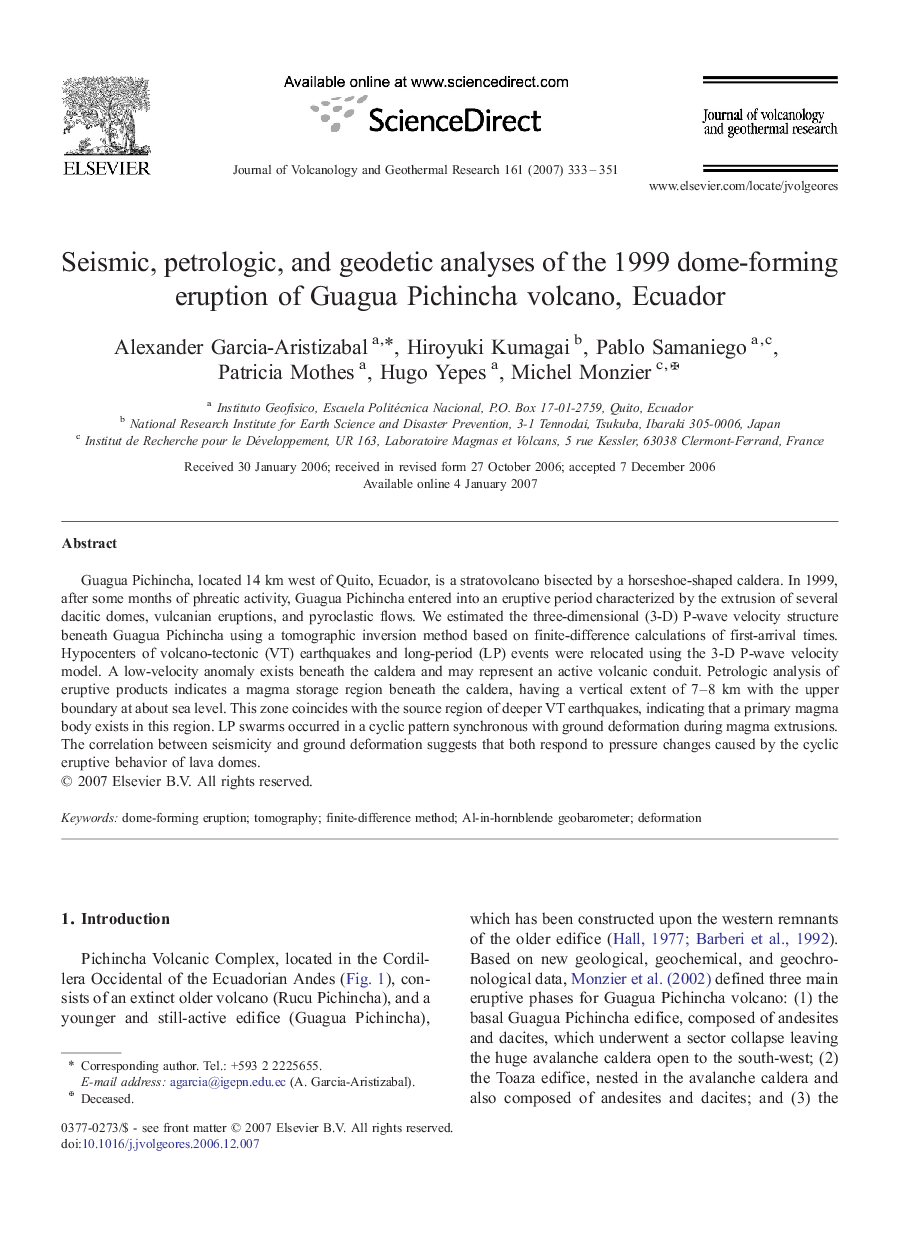| کد مقاله | کد نشریه | سال انتشار | مقاله انگلیسی | نسخه تمام متن |
|---|---|---|---|---|
| 4713862 | 1353922 | 2007 | 19 صفحه PDF | دانلود رایگان |

Guagua Pichincha, located 14 km west of Quito, Ecuador, is a stratovolcano bisected by a horseshoe-shaped caldera. In 1999, after some months of phreatic activity, Guagua Pichincha entered into an eruptive period characterized by the extrusion of several dacitic domes, vulcanian eruptions, and pyroclastic flows. We estimated the three-dimensional (3-D) P-wave velocity structure beneath Guagua Pichincha using a tomographic inversion method based on finite-difference calculations of first-arrival times. Hypocenters of volcano-tectonic (VT) earthquakes and long-period (LP) events were relocated using the 3-D P-wave velocity model. A low-velocity anomaly exists beneath the caldera and may represent an active volcanic conduit. Petrologic analysis of eruptive products indicates a magma storage region beneath the caldera, having a vertical extent of 7–8 km with the upper boundary at about sea level. This zone coincides with the source region of deeper VT earthquakes, indicating that a primary magma body exists in this region. LP swarms occurred in a cyclic pattern synchronous with ground deformation during magma extrusions. The correlation between seismicity and ground deformation suggests that both respond to pressure changes caused by the cyclic eruptive behavior of lava domes.
Journal: Journal of Volcanology and Geothermal Research - Volume 161, Issue 4, 1 April 2007, Pages 333–351